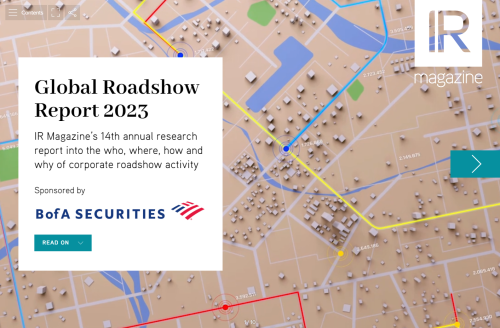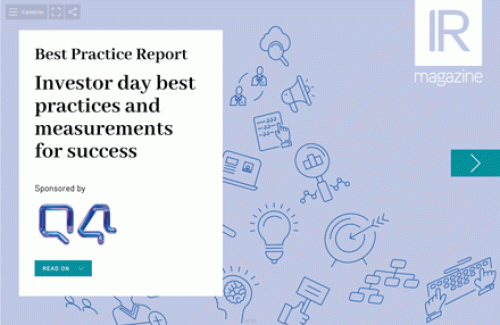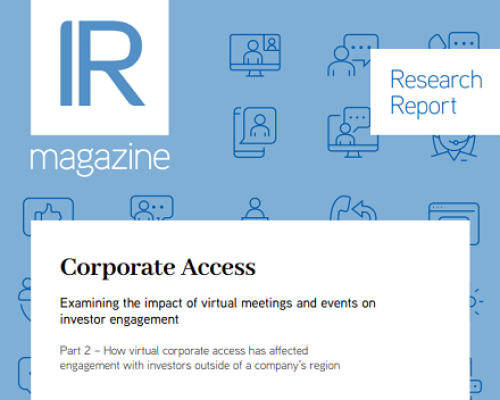In this regular article, we ask IR professionals how they would respond to a specific operational issue. In this edition, we asked how companies are managing their meeting schedules given the rise in direct contact with investors and lower attendance at some conferences.
Greg Costa, director of investor relations at Hersha Hospitality Trust
Over the past 18 months, most interactions with investors and research analysts have been performed virtually. During this period of time, IR teams – ours included – ramped up communication to the Street on how they were navigating the crisis. In order to do so efficiently, we often leaned on internal resources for direct communication with investors.
As a result, many investors have been able to loosen their reliance on the sell side for time with management teams. This, of course, has led to strong relationships with the key analysts and portfolio managers at these firms – a major positive – but it has also resulted in a need to balance management’s time at industry conferences with other investor meetings.
With the success of virtual events during this time, we have seen research shops testing the waters with inaugural industry conferences or fireside chats as new touchpoints with their buy-side clients. As a public firm, we welcome these new events and we increased facetime in order to ensure our story is being accurately conveyed to the Street, but investor attendance at conferences has seen a noticeable decline.
There have been more than a few occasions when the prospective investor attendee list has ended up being significantly lighter than prior years. Yes, this is due to the virtual nature of these events allowing investors to cancel last minute without impacting their time, but it is also due to the fact that IR teams are having a more direct dialogue with the buy side.
So where do we go from here? The biggest changes on the IR front are twofold: management’s use of time and increased internal organization. It is most helpful to communicate clearly with your senior managers about the potential roadblocks to having a robust schedule at industry conferences. This will help to not catch them off guard when they compare it with the same conference two years ago that had a full schedule and is now half as full.
Ultimately, it will come down to the IR team increasing direct outreach to the company’s shareholder base/target list to ensure everyone is getting the time with management that you ultimately set as a goal. This is not a new situation, but one that seems to have ramped up over the last few months. With the right outlook and time management, you can make this new trend a material positive for your company’s growth trajectory.
Veronika Kryachko, director of IR at Magnitogorsk Iron and Steel Works
This year we noticed that broker-organized conference agendas were quite weak. Indeed, I was amazed to see only one fund subscribe for a meeting with the CFO at one of the most important industry conferences, which has a long history of quality, especially when it comes to the itinerary.
While several years ago we could fulfill all the goals set for the year – such as number of meetings with existing and target investors – just by attending conferences, now it is impossible. There are two main reasons for that: the regulatory environment and Covid-triggered online meetings.
Mifid II changed the game tremendously. Investment funds that do not pay for the services of a broker cannot participate in any activity with that firm. When it comes to selecting which broker to pay, the investment fund usually takes into account two things: which broker is the best in terms of market knowledge, and the amount of budget available.
Funds used to enjoy an extensive flow of research from the Street, but now many of their budgets are limited to a maximum of three brokers – so they have a lower presence at conferences.
The second factor is the switch to virtual engagement amid the pandemic. The last face-to-face meeting we had was in January 2020. Since then, so much has changed in how we communicate with investors. What was previously a sign of low respect – holding a meeting or roadshow by phone or Zoom – is now the norm. And if the normal approach is to schedule meetings online, there is far less need to participate in broker-run conferences. This has led European IROs to explore new methods of investor engagement. Management of complicated CRM systems, crafting elaborate investor targeting schemes and mastering sell-side skills all constitute the new normal for the region's IR professionals.
As classical broker-run corporate access loses its brilliance, corporate access organized by IR teams is picking up momentum. The response rate and quality we have seen this year when communicating with funds directly is better than our experience at conferences, which makes us think we are on the right track.
This is an article from the Winter 2021 issue of IR Magazine. Click here to access the digital magazine.










